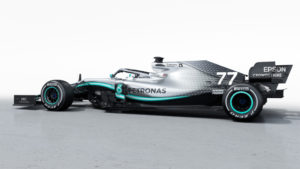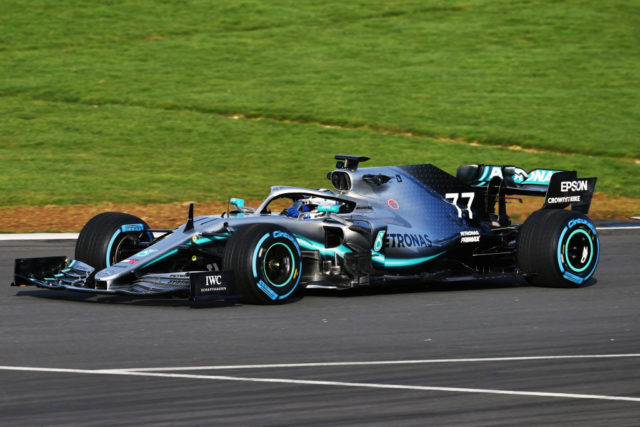Compared to its predecessor, the Mercedes-AMG F1 W10 EQ Power+ has been changed substantially. The majority of those modifications are a result of the significant changes to the Technical Regulations for the 2019 Formula One season.

“Regulation changes are both opportunity and threat,” said Technical Director James Allison. “They are an opportunity because all the old assumptions about what you need to have to be quick are swept away. And, if you are fleet of foot and smart in dealing with that, you can do better than all the other teams that are tackling the same change.”
Allison explained how the regulation changes are a threat as well as an exhilarating opportunity
“They are a threat because if you are not as smart and you didn’t see how to make the most of these new regulations, then you’ll certainly suffer in the coming season. But they are always exhilarating because you have that sharp sense of anxiety that you might not be doing enough. But equally the thrill and excitement of looking forward to finding out.”
The #InstaLap to rule all InstaLaps ?
Looking good @ValtteriBottas! @MercedesAMGF1 #PETRONASmotorsports https://t.co/t8NDQnUfT0
— PETRONAS Motorsports (@PET_Motorsports) February 13, 2019
The changes to the aerodynamic regulations were the main focus in the development of the W10. Meanwhile, the team worked hard to improve the weaker areas of the previous car and further build on its strengths.
“The handling of the W09 was a big improvement over the rather idiosyncratic W08,” said James. “We managed to be competitive at tracks which had plagued us in recent years. However, notwithstanding this improvement, we were still not as good as some of our competitors at preserving the performance of the rear tyres. We have worked hard on the suspension and aerodynamic characteristics to deliver a car that will be much kinder to its tyres. Enough, we hope, to allow us to be competitive at all phases of the race and at each track on the calendar.

New aero regulations drive significant changes to the Mercedes W10
“Even though the minimum weight limit was lifted by 10kg for 2019, weight reduction remains a real challenge on the current generation of F1 cars. Components that we felt were stripped to the bone in 2018 have been taken, one by one, and subjected to a further round of aggressive analysis to shave further weight from them. Some components surrender what feels like a giant step of half a kilo, others just a few grams. But collectively each of these victories add up to a handful of kilos. They have been invested back in the car on aerodynamics, suspension and Power Unit to bring performance.”
Despite significant changes to many areas of the car, the W10 also retains some of the characteristics of its predecessors. Such are the general architecture and the wheelbase stay the same.
“A close inspection will reveal that the execution of this concept has been further refined,” said James. “Every item is pushed tighter, made more slender – each change permitting us to improve the aerodynamic performance beyond what would have been possible had we accepted the physical limitations of the 2018 design.”
??? First look at W10 on track! #WelcomeW10 pic.twitter.com/q1nBVtVv2i
— Mercedes-AMG F1 (@MercedesAMGF1) February 13, 2019
James Allison is Mercedes’ technical director since 2017. In his career he has worked at Benetton, Larousse, Ferrari (2000-2005 and 2013-2016) and Renault (2005-2013). The British engineer works in F1 since 1991.

































